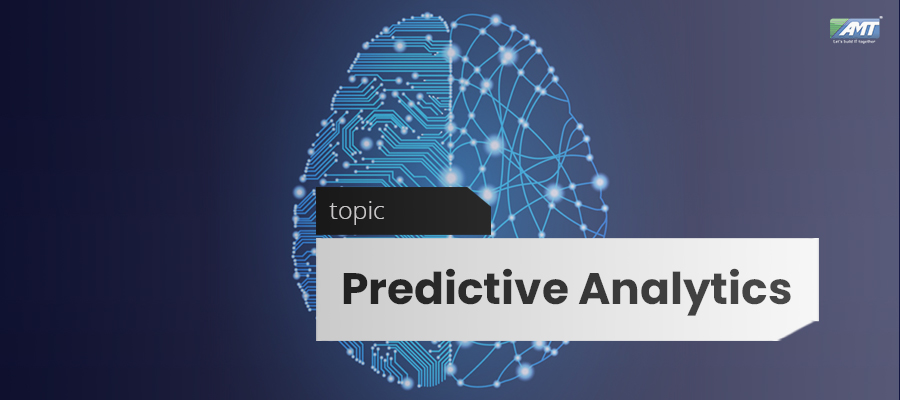Predictive analytics encompasses a variety of statistical techniques from data mining, predictive modelling, and machine learning, that analyze current and historical facts to make predictions about future or otherwise unknown events.
In business, predictive models exploit patterns found in historical and transactional data to identify risks and opportunities. Models capture relationships among many factors to allow assessment of risk or potential associated with a particular set of conditions, guiding decision-making for candidate transactions.
The defining functional effect of these technical approaches is that predictive analytics provides a predictive score (probability) for each individual (customer, employee, healthcare patient, product SKU, vehicle, component, machine, or other organizational unit) in order to determine, inform, or influence organizational processes that pertain across large numbers of individuals, such as in marketing, credit risk assessment, fraud detection, manufacturing, healthcare, and government operations including law enforcement.
Predictive analytics is used in actuarial science, marketing, financial services, insurance, telecommunications, retail, travel, mobility, healthcare, child protection, pharmaceuticals, capacity planning, social networking and other fields.
One of the best-known applications is credit scoring, which is used throughout financial services. Scoring models process a customer’s credit history, loan application, customer data, etc., in order to rank-order individuals by their likelihood of making future credit payments on time.
Predictive analytics process:
- Define project : Define the project outcomes, deliverable, scope of the effort, business objectives, identify the data sets that are going to be used.
- Data collection : Data mining for predictive analytics prepares data from multiple sources for analysis. This provides a complete view of customer interactions.
- Data analysis : Data Analysis is the process of inspecting, cleaning and modelling data with the objective of discovering useful information, arriving at conclusion
- Statistics : Statistical Analysis enables to validate the assumptions, hypothesis and test them using standard statistical models.
- Modelling : Predictive modelling provides the ability to automatically create accurate predictive models about future. There are also options to choose the best solution with multi-modal evaluation.
- Deployment : Predictive model deployment provides the option to deploy the analytical results into everyday decision making process to get results, reports and output by automating the decisions based on the modelling.
- Model monitoring : Models are managed and monitored to review the model performance to ensure that it is providing the results expected.
Generally, the term predictive analytics is used to mean predictive modeling, “scoring” data with predictive models, and forecasting. However, people are increasingly using the term to refer to related analytical disciplines, such as descriptive modeling and decision modeling or optimization. These disciplines also involve rigorous data analysis, and are widely used in business for segmentation and decision making, but have different purposes and the statistical techniques underlying them vary.
Predictive models:
Predictive modelling uses predictive models to analyze the relationship between the specific performance of a unit in a sample and one or more known attributes or features of the unit. The objective of the model is to assess the likelihood that a similar unit in a different sample will exhibit the specific performance. This category encompasses models in many areas, such as marketing, where they seek out subtle data patterns to answer questions about customer performance, or fraud detection models. Predictive models often perform calculations during live transactions, for example, to evaluate the risk or opportunity of a given customer or transaction, in order to guide a decision. With advancements in computing speed, individual agent modeling systems have become capable of simulating human behavior or reactions to given stimuli or scenarios.
Descriptive models:
Descriptive models quantify relationships in data in a way that is often used to classify customers or prospects into groups. Unlike predictive models that focus on predicting a single customer behavior (such as credit risk), descriptive models identify many different relationships between customers or products. Descriptive models do not rank-order customers by their likelihood of taking a particular action the way predictive models do. Instead, descriptive models can be used, for example, to categorize customers by their product preferences and life stage. Descriptive modeling tools can be utilized to develop further models that can simulate large number of individualized agents and make predictions.
Decision models:
Decision models describe the relationship between all the elements of a decision—the known data (including results of predictive models), the decision, and the forecast results of the decision—in order to predict the results of decisions involving many variables. These models can be used in optimization, maximizing certain outcomes while minimizing others. Decision models are generally used to develop decision logic or a set of business rules that will produce the desired action for every customer or circumstance.
The above is a brief about Predictive Analytics. Watch this space for more updates on the latest trends in Technology.
